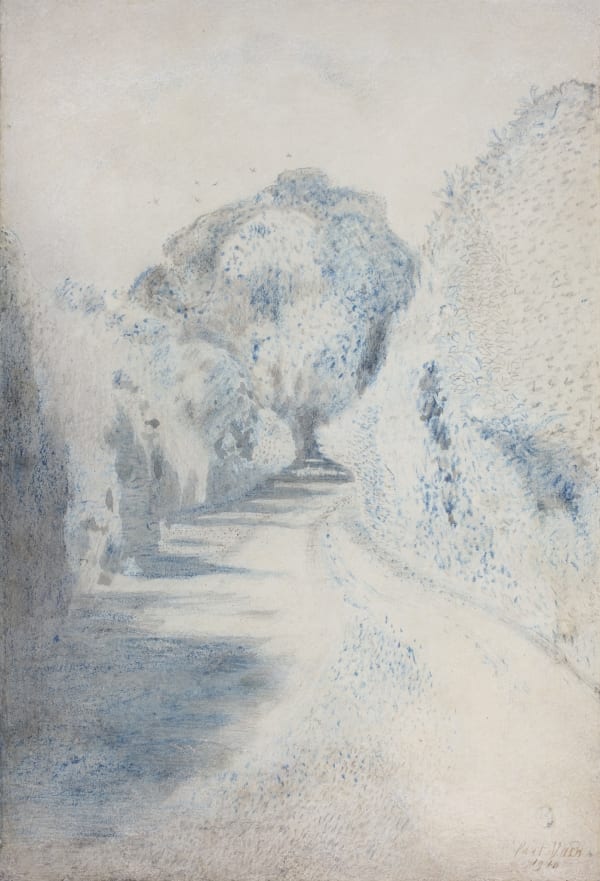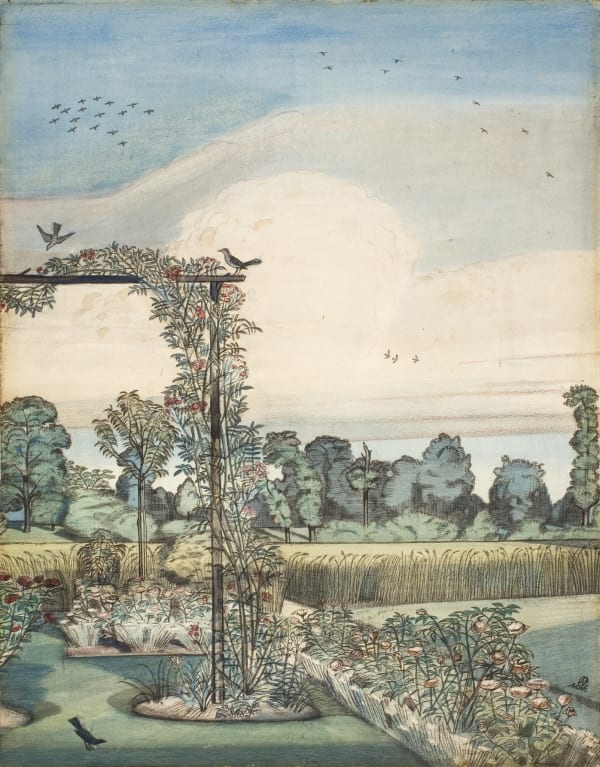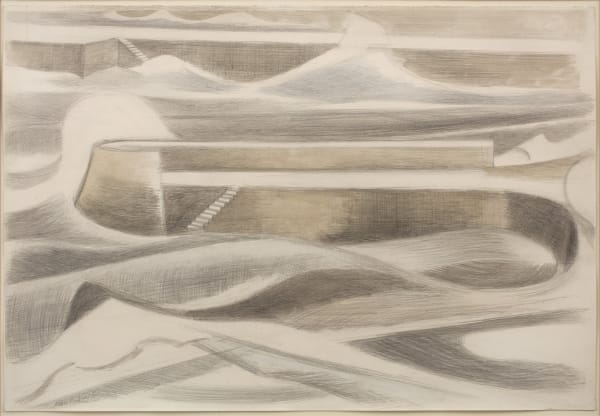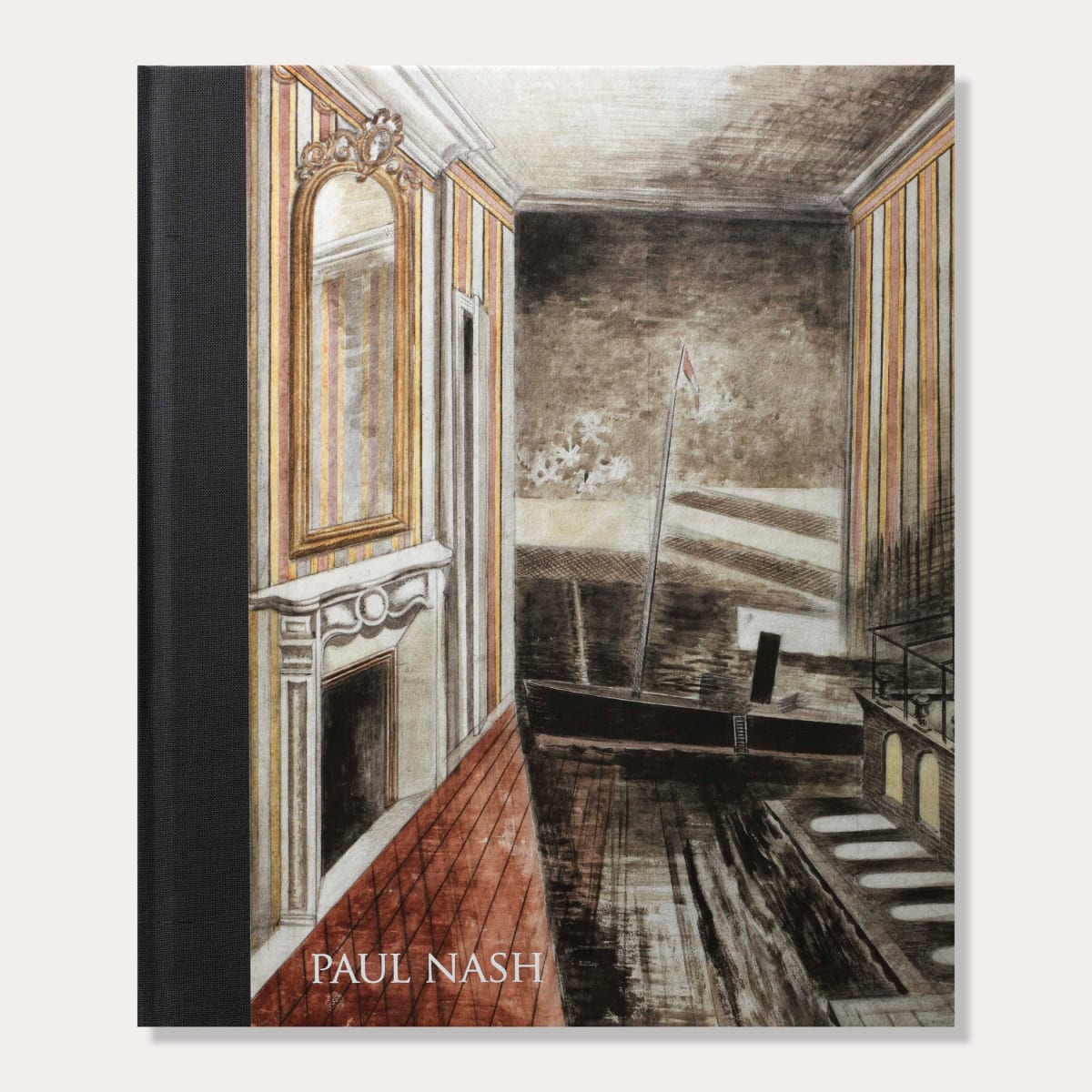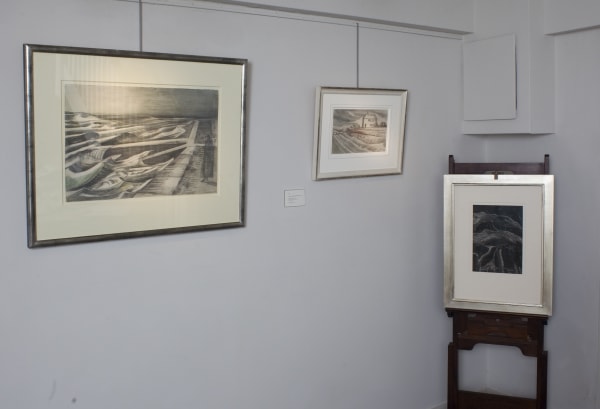Paul Nash: Watercolours, 1910-1946: Another Life, Another World
Open through October 2014, and marking the centenary of the outbreak of World War I, the exhibition celebrated the work of Paul Nash (1889- 1946), one of the most significant British artists of the twentieth century.
When war broke out in 1914 Nash was building a reputation as a painter of subtle watercolours: an understated modernist who nevertheless retained his links with the English Romantic tradition. Sent to the Western Front in early 1917, Nash was invalided home after a night-time fall – an accident that quite probably saved his life. When he returned to the Ypres Salient later in the year it was as an official war artist, and this posting revolutionised his art.
If 2nd Lieutenant Nash had been killed in action - as could so easily have happened - he would be remembered today as a gifted and hugely promising water-colourist, but the providential night-time fall ensured that his potential in watercolour was realised completely. Nash began his career in watercolours, and was drawn to the medium throughout his life, executing many of his most important and iconic works in watercolour. Piano Nobile showed watercolours from throughout Nash's extensive career, representing all the significant periods and themes of his artistic output. The exhibition drew on museum and private collections, and include many hitherto unseen works.
The exhibition was accompanied by a fully-illustrated catalogue written by David Boyd Haycock, author of Paul Nash (Tate Publishing, 2002) and A Crisis of Brilliance: Five Young British Artists and the Great War (Old Street Publishing, 2009), offering a comprehensive survey of Nash's watercolours.
-
 Paul Nash, Barbara, 1910 c.
Paul Nash, Barbara, 1910 c. -
 Paul Nash, A Lane in Blue, 1910
Paul Nash, A Lane in Blue, 1910 -
 Paul Nash, Landscape with a Large Tree, 1912
Paul Nash, Landscape with a Large Tree, 1912 -
 Paul Nash, The Garden at Wood Lane House, Iver Heath, 1912
Paul Nash, The Garden at Wood Lane House, Iver Heath, 1912 -
 Paul Nash, The Orchard, 1914
Paul Nash, The Orchard, 1914 -
 Paul Nash, A Farm, Wytschaete, 1917
Paul Nash, A Farm, Wytschaete, 1917 -
 Paul Nash, Rouen, 1928
Paul Nash, Rouen, 1928 -
 Paul Nash, Harbour and Room, 1931
Paul Nash, Harbour and Room, 1931 -
 Paul Nash, Study for Landscape of Bleached Objects, 1934
Paul Nash, Study for Landscape of Bleached Objects, 1934 -
 Paul Nash, Sea Wall, 1935
Paul Nash, Sea Wall, 1935


